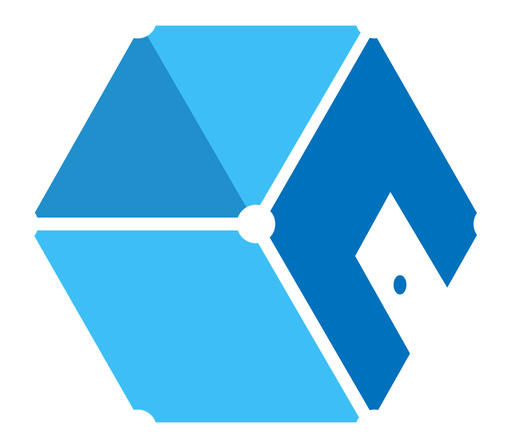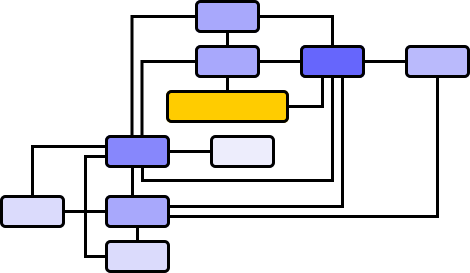
Meshroom
- Latest Versionlv2023.3.0
- DownloadsDl13
- Last UpdatedLU
- Operating SystemOSWL
Meshroom Overview
About App
Download Meshroom from dAppCDN
Meshroom is a free photogrammetry app for Windows, Mac and Linux. You can use it to create 3D models from photographs - all you need is to take photos of an object from different angles and this app will reconstruct it in three dimensions.
Download Meshroom
Get the appLatest version 2023.3.0 (2023-12-11)
- file size
- Archived Installer
Check files sizes below. - file meta
- File Signature
Press to identify the content. - file check
- Trusted File
Press to rescan the attachment.
- 1.4 GB
older versions
operating system
specific version
Meshroom Knowledge
Know the app
App Description
If you want to turn real-world objects into 3D models, you will notice a common problem - first, the 3D scanners are expensive and second, the modelling software requires artistic skills.
Meshroom can help you create 3D models from regular photos. It does this by analysing overlapping features in your images and it calculates the camera positions. You take photos around your object, feed them in the software, and you will obtain a textured 3D mesh out.
You can use Meshroom to digitise museum artefacts, or create game assets from real objects, or preserve architectural details etc. The software was created as a part of the AliceVision framework - which is a photogrammetric computer vision project developed by multiple universities and labs.
Important: Please note that it requires an NVIDIA GPU with CUDA compute capability 3.0+ for full functionality. Without a compatible graphics card, you're limited to Draft Meshing mode (it is slower and has a lower quality).
Meshroom Features
| Feature | Description |
|---|---|
| Node-based pipeline | You can see every processing step as a visual node and you can modify the parameters |
| Auto process | You can drag photos and press start - the software will handle everything |
| Add photos mid-project | You can add more photos to existing reconstructions - if you find gaps |
| Multi export formats | You can output OBJ files with textures for some third-party apps such as Blender, Unity, Unreal |
| Draft meshing mode | You can process without using a NVIDIA GPU it will use only the CPU |
| Sketchfab integration | You can upload models directly to Sketchfab |
| Camera database | Meshroom will recognise most camera models automatically for better calibration |
| GPU acceleration | If you have CUDA-enabled graphics card you will get faster processing |
| Project portability | You can move your projects between computers using the .mg file and cache folder |
| Live preview | You can see the results as each processing stage completes |
| Multi pipelines | You can run different settings at the same time for comparison |
| Batch available | You can start multiple projects to run overnight |
Meshroom Interface
You will notice that Meshroom uses a split layout (it is similar to other node-based apps)
The left panel will show the imported photos as thumbnails. The central panel will show you the 3D viewer where you can see the reconstruction progress. The bottom will show you the node graph - the entire process. The right panel will show you the image viewers and properties.
The Meshroom interface is quite technical, I would say quite intimidating when you see all the nodes. But the good thing is that you don't need to understand them.
The photo import is also easy and you can drag images into the left panel - there are no complicated import dialogs.
The 3D viewer also works great. You can rotate the model and zoom.
The process operations are quite intensive. If you add a lot of photos (for example 100 or more) it will take you an hour or more. The more you add, the more time it will take (quite obvious). If you need to use the "Draft Meshing" (without NVIDIA GPU), it will work but it will take longer and you will get lower quality results.
You might be disappointed about the low quality results when you use the "Draft Meshing" but if this is important at least you know what to expect before investing more time or money.
Good to know: You can save your project at any time and resume it later. Actually, I would recommend you to save it immediately after importing photos - always. Since processing can take hours, it is a good thing to protect against crashes - always. If you're an old Windows user like me (since Windows 95 etc. you know this is a great idea).
Installation is different - I also made a quick table for each operating system (Windows seems to win here).
| OS | Instructions |
|---|---|
| Windows | You can download the ZIP file, extract it anywhere, and run Meshroom.exe directly. There is no setup or install. I tested the latest version on a Windows 11 machine with an RTX 3060, and it runs great. Please make sure you have the updated NVIDIA drivers. |
| macOS | Meshroom will require some extra steps if you are using a Mac. You will need to install Meshroom via the command line or you can use a package manager. |
| Linux | The AppImage package should work on most distributions. Just download the "AppImage", make it executable and run it. |
Note for the Linux users: This is quite important if you are using Linux: To make it executable in your terminal, try this command:
chmod +x Meshroom*.AppImage
Note for the macOS users: Also, the GPU acceleration might not work depending on your Mac model.
A quick preview of the Meshroom Process
I tried to document this so you can understand better what's going on. Each step has a quick description.
| Step | Name | Description |
|---|---|---|
| 1 | CameraInit | This will read your photo metadata: it will load image metadata, sensor information and generate viewpoints etc.) |
| 2 | FeatureExtraction | It will find distinctive points in each image: it will extract features from images, including the descriptors for those features, change the file extension depending on what feature you're extracting. |
| 3 | ImageMatching | It will identify which images see the same parts: a pre-processing step with an algo that will attempt to match images |
| 4 | FeatureMatching | It will match features between paired images: it uses the feature descriptors to find the correspondence between images |
| 5 | StructureFromMotion | It will calculate the camera positions (this is when you first see results): it will reconstruct the 3D points from the input images |
| 6 | PrepareDenseScene | It will prepare images for depth calculation: node undistorts the images and it will generate EXR images |
| 7 | DepthMap | It will compute depth for each pixel (but this node requires NVIDIA CUDA GPU) |
| 8 | DepthMapFilter | It will remove inconsistent depth values: please note that this is not 100% consistent. Some depth maps will claim areas occluded by other depth maps.So this step will isolate these areas and it forces depth consistency. |
| 9 | Meshing | It will create the 3D surface: it will generate Mesh from SfM point cloud or from DepthMap |
| 10 | MeshFiltering | It will clean and smooth the mesh: it will filter the unwanted elements of from your mesh |
| 11 | Texturing | Finally, it projects photos onto the mesh: Texturing will create UVs and projects the textures change quality and size or file type of texture |
Keep in mind that each stage will show you a coloured progress bar.
Green means complete, orange means processing, blue means waiting.
If there is a failure, you will see the red colour and you can check the log for more details.
A few Tips for Better Results
I tested a few models with Meshroom, and here's what worked for me:
Take at least 50 photos - 30 is the minimum but the more pics you take - the better the final result. Walk around your object slowly, overlap each shot by 60-70%. Try to avoid any shiny or transparent surfaces (they will confuse the algorithms). The textured surfaces will work much better than plain colours.
If you're using a DSLR, set the aperture to f/5.6 or higher to keep everything in focus. Try to shoot in good, even lighting - harsh shadows will cause you problems. Try not to use the flash unless you can keep it consistent.
For small objects, it is great if you can use a turntable and rotate the object instead of walking around. For buildings, you can take photos at different heights - ground level, eye level, and if possible from above (hard and you need a drone).
Meshroom Alternatives
Based on my research and testing, there are a few Meshroom alternatives:
| Name | Free or Paid | The main difference |
|---|---|---|
| Agisoft Metashape | Paid - an expensive license) | It is expensive but you get PRO features, masking tools, faster processing, support etc. |
| RealityCapture | Paid (PPI model) | It is probably the Fastest processing option but it has a pay-per-project license type |
| COLMAP | Free | It is command-line focused, therefore not for beginners, more for the advanced users but faster than Meshroom |
| 3DF Zephyr | Free/Paid versions | It has a user-friendly interface but also a 50-photo limit on the free version |
| WebODM | Free/Paid cloud | This one is designed for drone mapping, so great for aerial photogrammetry |
Just tossing out a few ideas regarding the Meshroom alternatives
Metashape is probably the closest commercial alternative but it is expensive if you need the Pro version. RealityCapture has the best speed and quality but the pricing model might be expensive. It could work if you need someething once in a while or just a single time.
COLMAP as I said it will also offer you free photogrammetry but it requires technical knowledge and command-line skills. 3DF Zephyr is somewhere in the middle with its free version but there is a limit - up to 50 photos. WebODM is focused on the drone imagery rather than object scanning.
Final Conclusion
You can use Meshroom and obtain PRO 3D reconstructions for free. For example, you can use it to create game assets or preserve historical artefacts, or generate models for 3D printing. It can process the entire photogrammetry pipeline from photos to textured mesh
The best thing is that the AliceVision team worked hard and kept it updated over the years. Yes, the NVIDIA GPU requirement might look like a limitation (it isn't in my opinion and I could make an analogy with many things - two different cars etc.) Yes, the processing time will test your patience - I've had reconstructions run overnight. But the final result will compete with a similar software that will cost you a lot of money.
If you check the alternatives, Meshroom is great, and if you have the required hardware and time, it is actually amazing. If you like Meshroom, please consider a donation to the AliceVision project for this great free software.
Change log
Wed Aug 13 2025 - v2023.3.0
Full release notes on GitHub: https://github.com/alicevision/meshroom/releases/tag/v2023.3.0
Metadata
Category
Graphic Apps
License
Open Source
Visit Developer
Similar Graphic Apps
Similar Apps
 Graphic Apps
Graphic AppsIrfanView
- Latest Versionv4.72
- DownloadsDl1,186,948
- Operating SystemOSWindows
 Graphic Apps
Graphic AppsIrfanView-DE
- Latest Versionv4.72
- DownloadsDl23,562
- Operating SystemOSWindows
 Graphic Apps
Graphic AppsCaesium Image Compressor
- Latest Versionv2.8.5
- DownloadsDl279
- Operating SystemOSWindows Mac OSX
 Graphic Apps
Graphic AppsFotoSketcher
- Latest Versionv3.98
- DownloadsDl184
- Operating SystemOSWindows
 Graphic Apps
Graphic AppsGMIC
- Latest Versionv3.5.5
- DownloadsDl232
- Operating SystemOSWindows Linux
 Graphic Apps
Graphic AppsDiagram Designer
- Latest Versionv1.30
- DownloadsDl428
- Operating SystemOSWindows